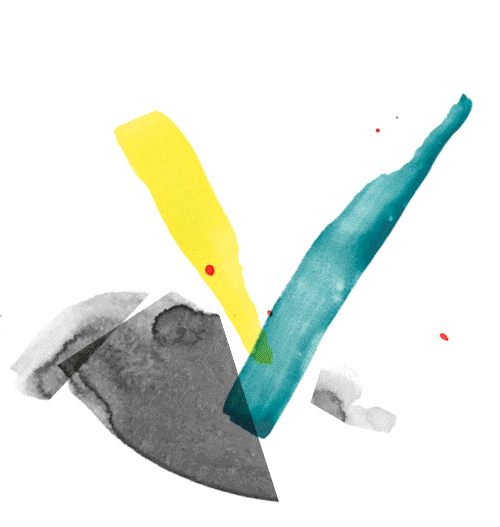

Sign up for our newsletters. You can change the settings or unsubscribe at any time.
Thank you for your subscription. We have sent you an e-mail with a confirmation link.


exp. 1
exp. 2
exp. 3

Andrés Pereira Paz
Venue: Gropius Bau
Andrés Pereira Paz
Born 1986 in La Paz, BO – lives and works in Berlin, DE
As fires ravaged its native Amazon habitat in 2019, a solitary guajojó bird made an unlikely journey; it flew to extraordinary heights to find safety in La Paz, Bolivia. Its sighting there caused a sensation and was reported in the local press. Within the darkness of this immersive installation, the guajojó is heard but not seen; its heartbeat and call resonate in a space softly illuminated by spheres of slow-burning fire and inhabited by celestial bodies, whose shadows on the surrounding walls seem to be falling from the sky, breaking apart, and disintegrating. Amidst this skyscape in turmoil, time seems to stand still as history repeats itself in an endless cycle of exploitation and anguish. For Andrés Pereira Paz, the bird’s tenacity speaks to the contemporary collective trauma of migration and displacement, in which escape is exceptionally arduous and return often impossible. It also embodies the instinctual desire to overcome adversity and flourish.
The metallic sculptural stars which accompany the flying bird, reference the line drawings in the seventeenth-century manuscripts of Felipe Guáman Poma de Ayala (c. 1535–c. 1615). Born into a noble Inca family shortly after Spanish colonization, he is known as the first Amerindian chronicler; his accounts describe the colonial oppression and violence against the original inhabitants of the Andes. The collective wound inflicted by this brutal past has yet to heal, especially because this history persists today in the ongoing violence and destruction of ecosystems and Indigenous communities. A bird of ill omen in Bolivian tradition, the guajojó’s song and dramatic migration seem like an eerie premonition of the devastating consequences of human infringement on the natural world. A recurring motif in Pereira Paz’s work is the idea that the syncretic nature of contemporary Bolivian—indeed, Latin American—identity can never be fully grasped without acknowledging the complex, often contradictory processes of colonization, and repairing the damage it inflicted.
Renata Cervetto
Género y colonialidad en busca de claves de lectura y de un vocabulario estratégico descolonial
Rita Segato
Essay
Maternidades subversivas
María Llopis
Monograph
IV: How Fear Can Dismantle a Body. Vis-a-Vis with two of four curators of the 11th Berlin Biennale
María Berríos, Lisette Lagnado
Conversation
Touching Feeling. Affect, Pedagogy, Performativity
Eve Kosofsky Sedgwick
Monograph
O Bailado do Deus Morto
Flávio de Carvalho
Play
COVID-19 VIDEOS
Carlos Motta
Video
By using this website you agree to the use of cookies in accordance with our data privacy policy.

Andrés Pereira Paz
Venue: Gropius Bau
Andrés Pereira Paz
Born 1986 in La Paz, BO – lives and works in Berlin, DE
As fires ravaged its native Amazon habitat in 2019, a solitary guajojó bird made an unlikely journey; it flew to extraordinary heights to find safety in La Paz, Bolivia. Its sighting there caused a sensation and was reported in the local press. Within the darkness of this immersive installation, the guajojó is heard but not seen; its heartbeat and call resonate in a space softly illuminated by spheres of slow-burning fire and inhabited by celestial bodies, whose shadows on the surrounding walls seem to be falling from the sky, breaking apart, and disintegrating. Amidst this skyscape in turmoil, time seems to stand still as history repeats itself in an endless cycle of exploitation and anguish. For Andrés Pereira Paz, the bird’s tenacity speaks to the contemporary collective trauma of migration and displacement, in which escape is exceptionally arduous and return often impossible. It also embodies the instinctual desire to overcome adversity and flourish.
The metallic sculptural stars which accompany the flying bird, reference the line drawings in the seventeenth-century manuscripts of Felipe Guáman Poma de Ayala (c. 1535–c. 1615). Born into a noble Inca family shortly after Spanish colonization, he is known as the first Amerindian chronicler; his accounts describe the colonial oppression and violence against the original inhabitants of the Andes. The collective wound inflicted by this brutal past has yet to heal, especially because this history persists today in the ongoing violence and destruction of ecosystems and Indigenous communities. A bird of ill omen in Bolivian tradition, the guajojó’s song and dramatic migration seem like an eerie premonition of the devastating consequences of human infringement on the natural world. A recurring motif in Pereira Paz’s work is the idea that the syncretic nature of contemporary Bolivian—indeed, Latin American—identity can never be fully grasped without acknowledging the complex, often contradictory processes of colonization, and repairing the damage it inflicted.
Renata Cervetto
COVID-19 VIDEOS
Carlos Motta
Video
I: Junto a las curadoras de la XI Berlin Biennale for Contemporary Art
Renata Cervetto, Lisette Lagnado
Conversation
Memorial to the Sinti and Roma Victims of National Socialism
Dani Karavan
Memorial
Flávio de Carvalho: Fazenda Capuava
Archive of Lisette Lagnado
Photographs
IV: How Fear Can Dismantle a Body. Vis-a-Vis with two of four curators of the 11th Berlin Biennale
María Berríos, Lisette Lagnado
Conversation
#fight4rojava
Graffiti
By using this website you agree to the use of cookies in accordance with our data privacy policy.

Andrés Pereira Paz
Venue: Gropius Bau
Andrés Pereira Paz
Born 1986 in La Paz, BO – lives and works in Berlin, DE
As fires ravaged its native Amazon habitat in 2019, a solitary guajojó bird made an unlikely journey; it flew to extraordinary heights to find safety in La Paz, Bolivia. Its sighting there caused a sensation and was reported in the local press. Within the darkness of this immersive installation, the guajojó is heard but not seen; its heartbeat and call resonate in a space softly illuminated by spheres of slow-burning fire and inhabited by celestial bodies, whose shadows on the surrounding walls seem to be falling from the sky, breaking apart, and disintegrating. Amidst this skyscape in turmoil, time seems to stand still as history repeats itself in an endless cycle of exploitation and anguish. For Andrés Pereira Paz, the bird’s tenacity speaks to the contemporary collective trauma of migration and displacement, in which escape is exceptionally arduous and return often impossible. It also embodies the instinctual desire to overcome adversity and flourish.
The metallic sculptural stars which accompany the flying bird, reference the line drawings in the seventeenth-century manuscripts of Felipe Guáman Poma de Ayala (c. 1535–c. 1615). Born into a noble Inca family shortly after Spanish colonization, he is known as the first Amerindian chronicler; his accounts describe the colonial oppression and violence against the original inhabitants of the Andes. The collective wound inflicted by this brutal past has yet to heal, especially because this history persists today in the ongoing violence and destruction of ecosystems and Indigenous communities. A bird of ill omen in Bolivian tradition, the guajojó’s song and dramatic migration seem like an eerie premonition of the devastating consequences of human infringement on the natural world. A recurring motif in Pereira Paz’s work is the idea that the syncretic nature of contemporary Bolivian—indeed, Latin American—identity can never be fully grasped without acknowledging the complex, often contradictory processes of colonization, and repairing the damage it inflicted.
Renata Cervetto
Queer Ancient Ways: A Decolonial Exploration
Zairong Xiang
Monograph
Solidarity and Storytelling. Rumors against Enclosure
María Berríos
Essay
III: La familia son quiénes se alegran con nuestros actos diarios. Detrás de las curadoras de la XI
María Berríos, Agustín Pérez Rubio
Conversation
Touching Feeling. Affect, Pedagogy, Performativity
Eve Kosofsky Sedgwick
Monograph
Hatred Among Us
Lisette Lagnado
Essay
II: La Solidaridad va Más Allá de un Concepto. Entre las Curadoras de la XI Berlin Biennale
Lisette Lagnado, Agustín Pérez Rubio
Conversation
By using this website you agree to the use of cookies in accordance with our data privacy policy.

Andrés Pereira Paz
Venue: Gropius Bau
Andrés Pereira Paz
Born 1986 in La Paz, BO – lives and works in Berlin, DE
As fires ravaged its native Amazon habitat in 2019, a solitary guajojó bird made an unlikely journey; it flew to extraordinary heights to find safety in La Paz, Bolivia. Its sighting there caused a sensation and was reported in the local press. Within the darkness of this immersive installation, the guajojó is heard but not seen; its heartbeat and call resonate in a space softly illuminated by spheres of slow-burning fire and inhabited by celestial bodies, whose shadows on the surrounding walls seem to be falling from the sky, breaking apart, and disintegrating. Amidst this skyscape in turmoil, time seems to stand still as history repeats itself in an endless cycle of exploitation and anguish. For Andrés Pereira Paz, the bird’s tenacity speaks to the contemporary collective trauma of migration and displacement, in which escape is exceptionally arduous and return often impossible. It also embodies the instinctual desire to overcome adversity and flourish.
The metallic sculptural stars which accompany the flying bird, reference the line drawings in the seventeenth-century manuscripts of Felipe Guáman Poma de Ayala (c. 1535–c. 1615). Born into a noble Inca family shortly after Spanish colonization, he is known as the first Amerindian chronicler; his accounts describe the colonial oppression and violence against the original inhabitants of the Andes. The collective wound inflicted by this brutal past has yet to heal, especially because this history persists today in the ongoing violence and destruction of ecosystems and Indigenous communities. A bird of ill omen in Bolivian tradition, the guajojó’s song and dramatic migration seem like an eerie premonition of the devastating consequences of human infringement on the natural world. A recurring motif in Pereira Paz’s work is the idea that the syncretic nature of contemporary Bolivian—indeed, Latin American—identity can never be fully grasped without acknowledging the complex, often contradictory processes of colonization, and repairing the damage it inflicted.
Renata Cervetto
Feminist Health Care Research Group
Web archive
II: La Solidaridad va Más Allá de un Concepto. Entre las Curadoras de la XI Berlin Biennale
Lisette Lagnado, Agustín Pérez Rubio
Conversation
Solidarity and Storytelling. Rumors against Enclosure
María Berríos
Essay
„Klaus Eckschen: Hörspiel“
Die Remise
Hörspiel
Freiheit für Chile!
Anonymous
Photo album
New Look
Flávio de Carvalho
Performance
By using this website you agree to the use of cookies in accordance with our data privacy policy.
By using this website you agree to the use of cookies in accordance with our data privacy policy.




